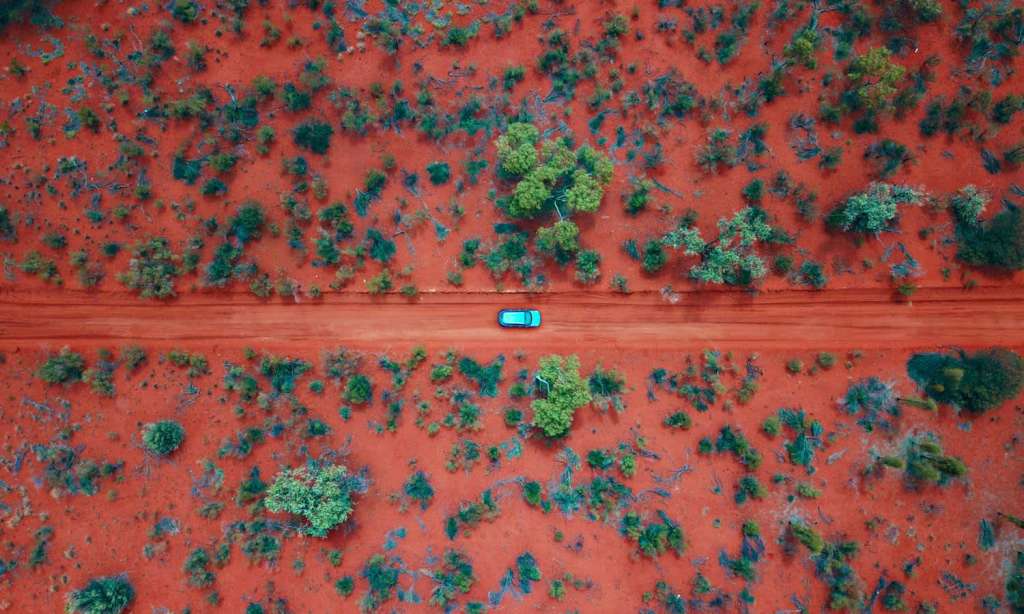NAIDOC Week celebrates and recognised the history, culture and achievements of Aboriginal and Torres Strait Islander peoples. It’s an opportunity for all Australians to learn about First Nations cultures and histories. The Latch team is sharing stories to help educate, honour and guide in our continued to push for change, so be sure to find all our pieces here. Val Morgan Digital acknowledges the Traditional Custodians of Country throughout Australia and their connections to land, sea and community. We pay respect to their Elders past and present and extend that respect to all Aboriginal and Torres Strait Islander peoples.
If you’ve done the ol’ road trip up to Byron, wintery weekend in Tassie or dive or snorkel in the Great Barrier Reef, and you’re looking for a new way to experience Australia, consider visiting a sacred Indigenous site.
With Indigenous Australians thought to be one of the oldest civilisations in the world, visiting one of the places that help to tell their ancient stories and share about their traditional ways can often be a spine-tingling experience, to say the least.
From a dry lake where the skeleton of a woman found was radiocarbon dated to around 40,000 years ago, to a stunning natural amphitheatre filled with ancient fossils and Indigenous rock art, these are seven of the best sacred Indigenous Australian places around the country. Note that this list is in no way exhaustive — it’s merely for you to see what’s out there and tickle your interest in learning more about a fascinating culture.
Lake Mungo, New South Wales
Within Mungo National Park, Lake Mungo is a dry lake, part of the Willandra Lakes World Heritage Area. It’s said to be one of the longest continual records of Aboriginal life in Australia, as well as the home of skeletons that were the oldest known fully modern humans outside of Africa. One skeleton, in particular, the Mungo Woman, has been radiocarbon dated to around 40,000 years ago. Visit on your own or take a guided tour with a local Aboriginal ranger.

Related:
Related:
Devil’s Pool, Queensland
Visit Devil’s Pool at your own risk. Located in Babinda Boulders, about 60km south of Cairns, it’s a natural pool with large granite boulders. According to the local Aboriginal community of Babinda, it’s the site of a haunted story. Young girl Oolana from the Yindinji Tribe had been married but had had an affair and been caught. She’d escaped and thrown herself into Devil’s Pool, turning the still water into a rushing torrent. Since 1959, at least 19 people have died there. Book a tour to Devil’s Pool from Cairns or drive there on your own.

Wilpena Pound, South Australia
A natural amphitheatre of mountains, Wilpena Pound in the Flinders Ranges is known for its geological history, ancient fossils and Indigenous rock art. According to the tradition of the Adnyamanthanha people, the Indigenous inhabitants of this part of South Australia, the site was formed when two Dreamtime serpents travelled south and carved the landscape in their wake. Book a two-hour Aboriginal guided walk of the area at the Wilpena Pound Resort.

Birrarung Marr, Victoria
Right in the centre of Melbourne is Birrarung Marr, a park named after the language of the Wurundjeri people who originally lived in the area. Today, the park features Birrarung Wilam Aboriginal art installation, celebrating the diversity of Victoria’s Indigenous culture; a winding pathway acknowledging the significance of the eel as a traditional food source; and a semi-circle of metal shields representing each of the five groups of the Kulin Nation. A one-hour tour of the park is on from Wednesdays to Fridays, leaving Federation Square at 1pm.

Birrigai Rock Shelter, ACT
Birrigai Rock Shelter in Tidbinbilla Nature Reserve is formed by large blocks of stone leaning against each other, fitting roughly 12 people underneath. Archaeological evidence suggests Aboriginal people camped 21,000 years ago, making it one of the most significant Indigenous sites in southeast Australia. Take 3km-long Birrigai Time Trail to get to the shelter, free to walk, though requiring of an admission fee, which includes parking, to get into the reserve.
View this post on Instagram
Uluru, Northern Territory
A list like this wouldn’t be complete without a mention of Uluru, easily one of the most sacred of sites among Indigenous Australians. A massive sandstone rock in the middle of the Northern Territory’s Red Centre, Uluru is thought to have started forming over 550 million years ago. The Anangu community, the traditional owners of Uluru, had long asked visitors not to climb it, but it wasn’t until October 2019 that climbing the rock was officially banned.

Related:
Related:
Kata Tjuta, Northern Territory
Another rock formation, Kata Tjuta, also called The Olgas, is a collection of 36 boulders jutting out of the ochre-red, arid landscape southwest of Alice Springs. Like Uluru, the rocks carry spiritual significance for Indigenous people, including one Dreamtime story about a snake king named Wanambi who lived on the summit of Mount Olga. Much of the mythology of Kata Tjuta isn’t shared with outsiders and tourists.

Read more stories from The Latch and subscribe to our email newsletter.







